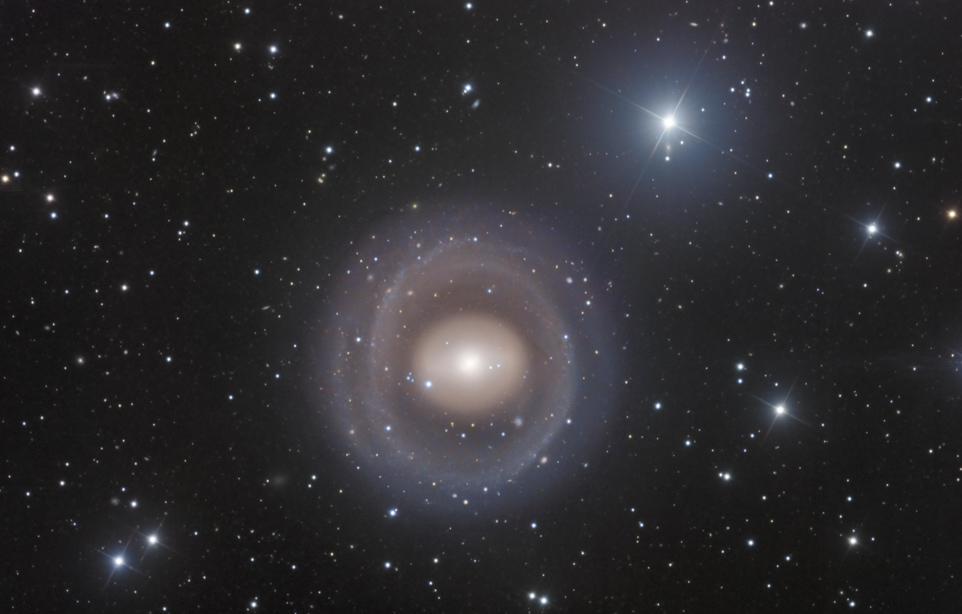

NGC1291: This is a very nice example of the rather unusual "Ring Galaxy" structure (this one has a central bar--the very bright, roughly horizonat region in the middle of the core).
Nobody really knows how these things are formed. Some astronomers
believe that ring galaxies are formed when a smaller galaxy passes through the center of a larger galaxy; because most of a galaxy consists of empty space, this "collision" rarely results in any actual
collisions between stars. However, the gravitational disruptions caused by such an event could cause a wave of star formation to move through the larger galaxy. Other astronomers think that rings are
formed around some galaxies when external accretion takes place. Star formation would then take place in the accreted material because of the shocks and compressions of the accreted material.
The ring contains many massive, relatively young blue stars, which are extremely bright. The central region contains principally old, red and yellow/red stars.
This galaxy is about two-thirds the size as our own Milky Way galaxy, about 65,000 light years across; it is about 33 million light years from us.
Copyright 2014, 2015 Mark de Regt